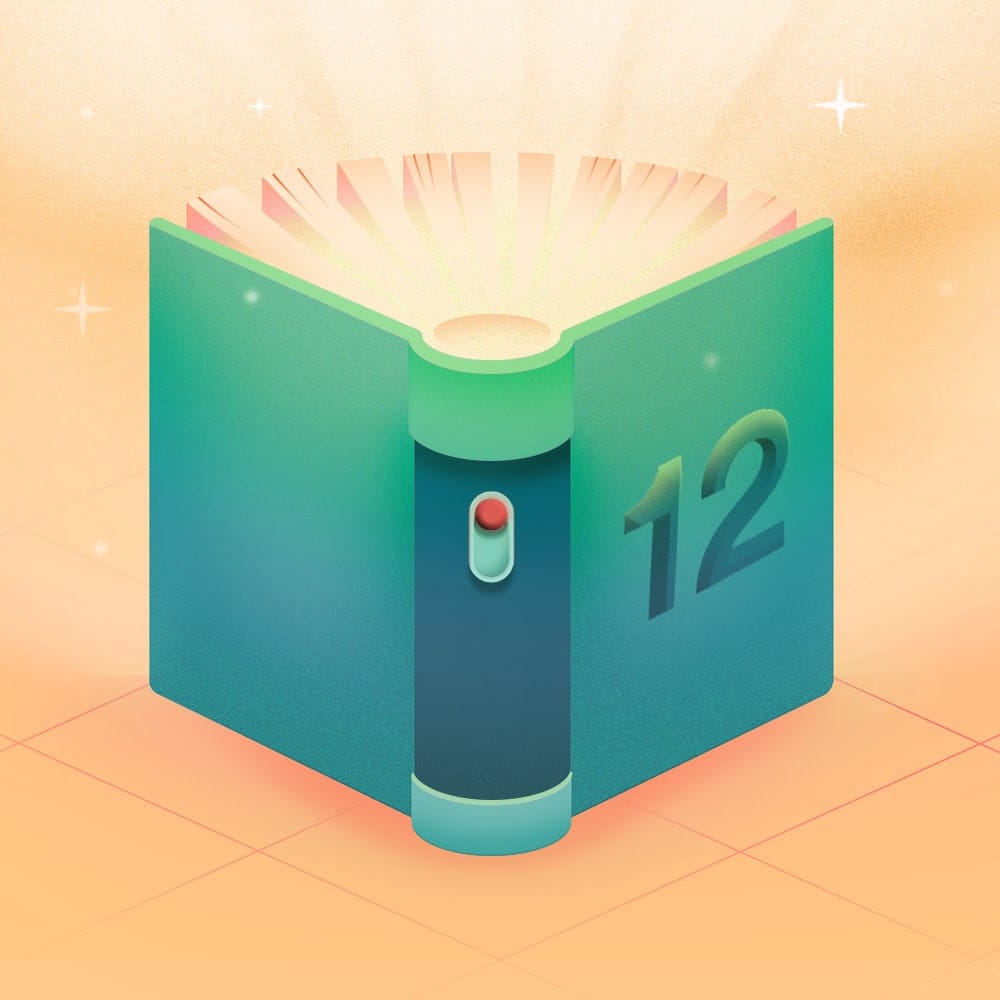We used to wonder if our company’s outstanding staff retention rate was just a matter of random luck. But today, there’s no doubt anymore that the driving force of our staff retention is our company culture.
We are often asked how we got to where we are today, and more specifically, how we’ve achieved such an impressive retention rate (we aren’t the only ones who say so! 😛).
At times we have been surprised by our own success, which we originally attributed to luck, before we realized the pivotal role that our management practices and choices have played in our development.
The truth is that we owe our success to a strong company culture, which is the key to attracting and retaining employees. It’s all about having a strong and engaging culture.
Our goal with this post is for you to glean at least one tip that you will be able to try out at your company.
So, which of these 12 tips will you take away? 😉
1. To Build a Strong Company Culture, Start With Why, Not How
People don’t buy what you do, they buy why you do it. This is why your mission is so important. Once you’ve established your mission as clearly as possible, you need to convey it through all your company’s actions and decisions.
Why?
To make sure that team members not only know your mission, but internalize and embody it on a daily basis.
Our mission is to make management more person-centred by developing software that makes life simpler for front-line employees.
2. Create a Collaborative Employee Guide
In our early years at Agendrix, we did not have an employee guide. If you had asked any of our five shareholders how they managed without this valuable tool, they would have told you that they relied on “common sense.” And it almost always worked. 😛
However, as we grew, it became increasingly obvious that an employee handbook of some kind would be useful for onboarding and for answering everyday questions.
Rather than developing a comprehensive employee guide in one go, we opted for an evolving, collaborative approach in the form of an easy-to-update online employee guide.
And we had employees pitch in for several reasons:
- So that they would feel concerned/involved; and
- So that the guide would reflect our situation and our team, rather than an abstract ideal.
👉 We used a tool called Coda, but Notion is great too.
3. Set Up an Employee Referral Program
Given the difficulty of recruiting, especially for some jobs such as developers 🙋♂️, we thought to offer our team members a referral bonus.
If an employee refers a candidate who is then hired and stays on with the company for 3 months, the employee is awarded $500. Since developers a rare commodity, we offer the double—$1,000.
Admittedly, in the beginning, we didn’t know if this was going to work. Thankfully, it turned out to be a fantastic incentive: our team shares job postings much more frequently and the initiative has brought us several new hires.
Referral bonuses rock!
4. Showcase Your Company Culture While Staying Authentic
To hang on to our staff as long as possible, we make it a point to hire employees who will be able to grow with the company in the long term. Time has taught us that personality fit and values play a huge role in long term employer-employee relationships.
It’s very important for potential employees to be able to imagine themselves as members of our team. This is why most of our social media posts strive to answer the question, “What would my everyday life be like if I worked at Agendrix?” Our posts are a sincere and realistic reflection of our everyday life, including our offices, our teams’ involvement in the community as well as our values, projects and activities.
5. Meet More Often
There are many opportunities to meet with employees, from performance evaluations to one-on-ones meetings. We consider these moments vital and we prioritize them over other tasks.
Annual Evaluations, Three Times a Year 🤣
From our inception, we abandoned the traditional annual evaluation, among other things because it offers little opportunity for the employee to improve—and it can sometimes lead to unpleasant surprises. Imagine your employee learning that their performance is unsatisfactory… whereas had they known there was a problem, they could have addressed it 6 months ago! This is especially true for large companies, where employees don’t always have the opportunity to see their immediate manager every day.
We’ve chosen to hold evaluations every 4 months, and to offer smaller salary increases more often as well. We also try to make it a manager-employee activity by going out to the restaurant or taking a walk together, for example.
We also make sure that immediate managers meet with their team members one-on-one as often as possible (weekly for newer employees, and then once or twice a month thereafter, according to the employee’s needs).
6. Values, Mission, Vision… Repeat
We believe that a company’s mission and values should be front and centre in EVERYTHING the company does. If they are authentic, this will happen organically.
At Agendrix, the title slide of every presentation we use at employee meetings showcases our mission. It reminds our team of what really matters.
The goal is for employees to feel fired up by their employer’s mission and values, which is the foundation of belonging—and by the same token, of retention. This is why we reiterate our values often.
💡 Finally, since all companies are continually evolving, your mission, vision and values should be reviewed annually.
Our “No Bullshit” Anecdote
In-house, we have always emphasized the idea of No bullshit. But designating this as a core value of our company seemed like a bit of a stretch. Finally, in 2022, we took the plunge and made it official!
👉 So, what does this mean for us? We are frank and honest. Transparency is a pillar of Agendrix—we tell it like it is (while remaining respectful, of course). When we make a mistake, we believe in owning up, learning from the experience, and moving on.
7. Interdepartmental 101 Training
For a company to be successful, teamwork is key. Unfortunately, growth sometimes leads to working in silos.
To avoid this at our organization, we’ve put in place several initiatives, including interdepartmental mini-training sessions. When onboarding a new employee, we make sure that each director presents their department’s role, strategy, tools and technologies, etc.
8. Establish Public Pay Scales at Your Company
In the world of work, salaries are a central issue. This has been even truer, and more frequently mentioned by managers, since the labour market was turned upside down.
There is a lot to be said about salaries. At Agendrix, we’ve made several important decisions. The first is to always show salaries in job postings. The second is to set a salary floor of $50,000. And the third is to make our salary ranges public.
Why, you ask?
Making salaries available to all employees aligns with several of our most cherished values:
- The value of No Bullshit;
- Transparency: no one should have to be embarrassed to talk about their income (let’s break the taboo);
- Making it easy for employees to envision their future with the company (employees should have an overview of their next steps and overall career progression); and
- Fairness: showing that salaries are not determined randomly but are part of a thought-out corporate structure.
9. Display Salaries in Job Postings
We have already touched on this aspect, but we felt it deserved its own paragraph. 😛
First, we’re just going to jump right in and say we think that not showing the salary (or at least a salary range) on a posting is an appalling practice.
Have you ever thought about how much time employers and candidates waste when the latter does not even know if the employer is offering an acceptable salary?
10. Share Customer Reviews In-House
Each month, our Customer Success department sends an email to the rest of the team to share customer feedback and reviews. These reviews from our users and customers are the reason why we do what we do. Since not all employees interface with customers, these reviews help motivate the team to continue doing quality work and to keep improving in order to respond to customer requests more effectively.
These reviews highlight the real, tangible impact our product is having on people’s lives. For employees who create content or developers who design the app, and who therefore have less direct contact with users, this feedback is invaluable.
11. “Side Quests” for More Routine Jobs, as a Way to Boost Retention
Drawn from the world of video games, the term sidequest is used to describe any optional objective offered to the player to enrich their adventure. We have adopted (and adapted) this term to describe additional tasks that are not part of our employees’ daily routine.
In a pharmacy lab, technicians are never at the same post in the morning and afternoon. It’s no coincidence that this change helps break the routine and keep up motivation.
Here, we do exactly the same for employees in more routine positions. Here’s how we do it.
Our approach is to pinpoint the skills that employees have but are not using, and then give them an opportunity to use those skills. For example, in the Customer Success department, several colleagues have side roles that complement their main ones. One team member will be responsible for developing our help centre while another handles customer satisfaction reports, etc.
This approach is rewarding for the team and helps mix things up. Bingo!
12. Internal Transparency
Like our value of No Bullshit, transparency has been in our DNA since our beginnings. We have always shared our company’s development and numbers with the team—including sales figures, achievements, setbacks, etc. The entire team meets about 8 times a year during “all-hands” meetings, during which different department representatives share what’s new during the cycle, as well as what’s coming up in the next one.
Our CFO also sends out a monthly video in which he goes over Agendrix’s financial progress and explains variations with respect to targets and a host of other financial and customer-related items.
We also try to find out how our employees are really doing—how is the motivation, stress or satisfaction on our teams?
The only way to find out is to ask. To get honest answers, we opt for anonymous survey tools (Officevibe for office employees and Agendrix for field employees).
Discover our Employee Survey Software
The Secret Recipe for a Strong Company Culture: Honesty and a Person-Centred Approach
Our goal with this post has been for you to take away at least one of our 12 tips and try to implement it at your company.
Now that you know the 12 ingredients of our secret recipe, which one are you going to try out with your team?










